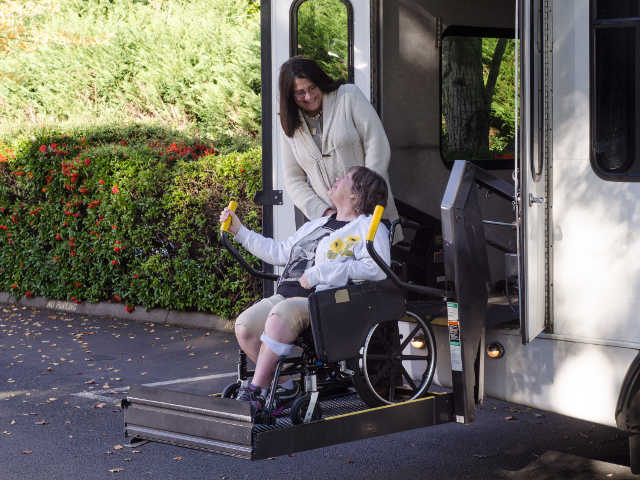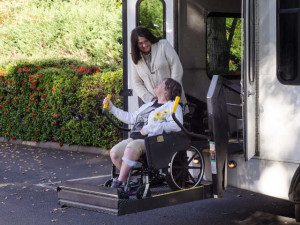
Getting Around With Senior Transportation
 In home health care services help seniors and their families solve many problems associated with aging. Of course the particular home care services will vary according to the needs of the client, and these will change as time passes. Rehabilitation care will end when a full recovery is made, while services for clients suffering from degenerative conditions will increase. There is one type of home health care that’s likely to last indefinitely: senior transportation. When it’s time for a senior citizen to stop driving, senior transportation can be the difference between isolation and a full and interesting lifestyle.
In home health care services help seniors and their families solve many problems associated with aging. Of course the particular home care services will vary according to the needs of the client, and these will change as time passes. Rehabilitation care will end when a full recovery is made, while services for clients suffering from degenerative conditions will increase. There is one type of home health care that’s likely to last indefinitely: senior transportation. When it’s time for a senior citizen to stop driving, senior transportation can be the difference between isolation and a full and interesting lifestyle.
The Most Common Form of Senior Care
Senior transportation is the most common home health care service in the United States. It easily eclipses any other form of caregiving for seniors by a wide margin. It’s estimated that over 1.4 billion trips are arranged for seniors every year, and that number is expected to grow as the elderly population increases.
One of the reasons that senior transportation is so common is that it’s so useful. In order to stay independent, many senior citizens need help with everyday chores like food preparation and running errands. Unfortunately, many seniors are forced to choose between handling their own day-to-day chores and traveling to all the destinations that younger people take for granted.
Senior Transportation Can Be Hard on a Family
Taking over transportation duties for a parent when they become unable to drive safely can be a daunting task. It can be difficult to set aside enough time during a busy week to take a loved one to doctor appointments, social engagements, and other daily errands like food shopping. If a family caretaker is unable to keep up with the needs of an elderly person to leave the house when they need to, it encourages seniors to continue driving even though they are no longer able to drive safely. This can increase anxiety for both the family caregiver and the senior citizen.
Transporting Seniors Means More Than Just Driving
Professional caregivers receive training in transporting seniors that a family member can’t match. For instance, the National Center on Senior Transportation offers interested caregivers assessment tools that help them determine what forms of transportation are suitable for particular senior citizens.
Proper training in transportation for seniors can also offer opportunities to save money. It’s often possible to differentiate between types of travel that introduce high levels of anxiety for seniors, and other trips which aren’t as challenging. Expert senior care providers can help families decide when it’s necessary for a family member to help, when public transportation or taxi services are appropriate, or when senior transportation should be provided by a professional home care service.
Battling Against Isolation
Senior citizens can become very concerned about a total lack of mobility that follows the end of their driving career. This anxiety can make seniors continue driving long after it’s safe for them to do so, because they are afraid of isolation more than causing an accident. Seniors often equate the end of their driving days with the beginning of a period of total dependence on others. That doesn’t have to be the case.
If an elderly driver understands that they can rely on help from friends, family, and home health care services in order to get to where they want to go, they’re much less likely to continue driving after their physical condition makes it unsafe. Everyone wants to stay independent and active for as long as possible.
If the only thing standing between the comfort and safety of a loved one is transportation, families should take advantage of trained services from home health care providers. It’s an easy, safe, and inexpensive way to make sure senior citizens are as active and happy as possible in their golden years.





